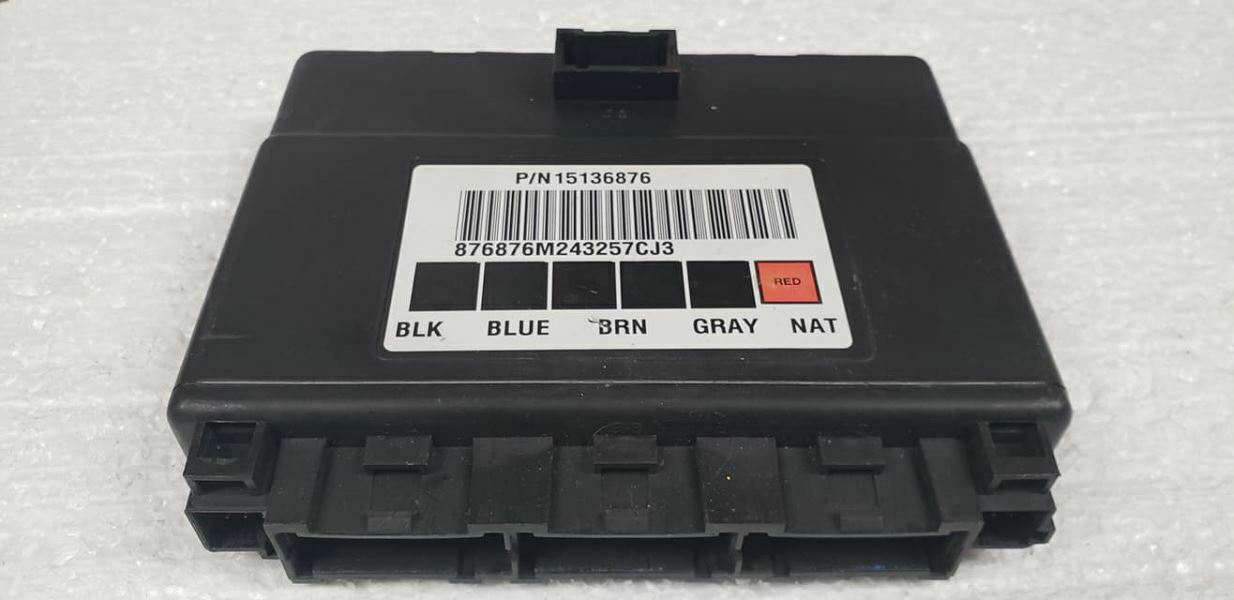Tired of Chasing Electrical Gremlins in Your GM Truck or Van?
As a technician with over two decades of experience, I’ve seen it all. Flickering dashboard lights, power windows with a mind of their own, a security system that randomly immobilizes your engine—these aren’t just annoyances; they’re classic signs of a failing Body Control Module (BCM). The BCM is the central hub for your vehicle’s body electronics, and when it starts to go, it can create a cascade of frustrating and hard-to-diagnose problems. Stop throwing parts at the problem. This is the direct, reliable solution you’ve been looking for.
This isn’t just a replacement part; it’s a complete, ready-to-install solution. We take the hassle and high cost of dealership programming out of the equation. Simply provide us with your vehicle’s VIN at checkout, and we will flash this module with the latest GM software specific to your truck or van. It arrives at your door ready to be installed, saving you time, money, and a trip to the service center. This is the same process we’ve used in our shop for years to get customers back on the road quickly and confidently.
From the Diagnostic Bay: The Case of the Ghostly Gremlins
A customer brought in his 2006 Silverado 2500 last month with a laundry list of bizarre issues. The dome light wouldn’t turn off, the driver’s side power lock was dead, and occasionally, the truck wouldn’t start, with the security light blinking on the dash. He’d already replaced the battery and checked all the fuses. After connecting my scan tool, I saw multiple communication loss codes with the BCM. Instead of a complex and costly rewiring job, we started with the most likely culprit. We installed a VIN-programmed 2003-2007 GM BCM, and within an hour, every single one of his electrical gremlins was gone. The truck started reliably, and all accessories worked as they should. It’s a textbook example of how a failing BCM can mimic a dozen other problems.
Is Your Truck or Van Showing These Symptoms?
A faulty BCM can manifest in numerous ways. If you’re experiencing any of the following, this module is the likely solution:
- ✔ Erratic or non-functional power windows, door locks, or mirrors.
- ✔ Interior or exterior lights that stay on, flicker, or don’t work at all.
- ✔ The security or anti-theft system preventing the vehicle from starting.
- ✔ Horn sounding unexpectedly or not working when pressed.
- ✔ Inaccurate or dead gauges on the instrument cluster.
- ✔ Diagnostic trouble codes (DTCs) related to U-codes (communication) or B-codes (body).
Your Straightforward BCM Installation Guide
Replacing the BCM is a manageable job for a DIYer with basic tools. While locations vary slightly between trucks and vans, the process is generally similar.
- Safety First: Always disconnect the negative terminal from your vehicle’s battery and wait a few minutes to allow the system to fully discharge.
- Locate the BCM: On Silverado and Sierra pickups, it’s typically found under the driver’s side of the dashboard, near the steering column. On Express and Savana vans, it’s often located behind the center dash panel.
- Remove Trim Panels: Carefully remove any plastic trim or panels necessary to access the module. Keep track of your screws and clips.
- Disconnect and Remove: The BCM will have several multi-pin electrical connectors. Carefully press the release tabs and pull the connectors straight out. Then, unbolt the module from its mounting bracket.
- Install the New Module: Bolt your new, pre-programmed BCM into place. Securely plug in all the electrical connectors, ensuring they click into place.
- Post-Installation Procedures: Reconnect the battery. You will need to perform a couple of critical relearn procedures. A qualified scan tool is required to perform the ‘Setup SDM Primary Key in BCM’ to clear the airbag light. Some vehicles may also require a Brake Pedal Position Sensor recalibration. If you are not equipped to do this, a local repair shop can complete these final steps for you.
Guaranteed Fitment for Your GM Vehicle
This module is a direct replacement for multiple part numbers, ensuring broad compatibility. Please verify your vehicle is on this list. This unit fits a wide range of 2003-2007 Chevrolet and GMC trucks and vans, including:
- Chevrolet Silverado 1500/2500/3500 (2003-2007 Classic)
- GMC Sierra 1500/2500/3500 (2003-2007 Classic)
- Chevrolet Express 1500/2500/3500 (2003-2007)
- GMC Savana 1500/2500/3500 (2003-2007)
- Chevrolet SSR (2003-2006)
This module is a direct replacement for part numbers: 15167329, 15194169, 15747545, 15136224, 15116065, 15198115, 15136876, 10367689.
Frequently Asked Questions
What exactly does the Body Control Module do?
The BCM acts as the central computer for your vehicle’s body electronics. It controls non-engine related functions like power windows, locks, lights, the security system, wipers, and more. When it fails, these systems can become unreliable.
Why do you need my VIN number?
Your Vehicle Identification Number (VIN) allows us to program the BCM with the exact software and settings for your vehicle’s specific options and features. This ensures 100% compatibility and functionality right out of the box, eliminating the need for expensive dealer programming.
Is this a simple plug-and-play installation?
The physical installation is plug-and-play. However, after installation, you must perform a ‘Setup SDM Primary Key’ procedure with a diagnostic tool to sync the BCM with the airbag system and turn off the airbag light. A brake pedal relearn may also be needed. This is a standard procedure for BCM replacement on these vehicles.
Can I drive the vehicle without doing the post-installation procedures?
While the vehicle may start and run, we strongly advise against it. The airbag system will be inoperative until the SDM key setup is performed, which is a critical safety issue. Completing all post-install steps ensures your vehicle is safe and all systems are functioning correctly.
How can I be sure the BCM is my problem?
Common symptoms include multiple, unrelated electrical issues. A professional diagnosis with a high-end scan tool that can communicate with the BCM is the best way to confirm. However, if you’re experiencing several of the symptoms we’ve listed, the BCM is the most probable cause.



